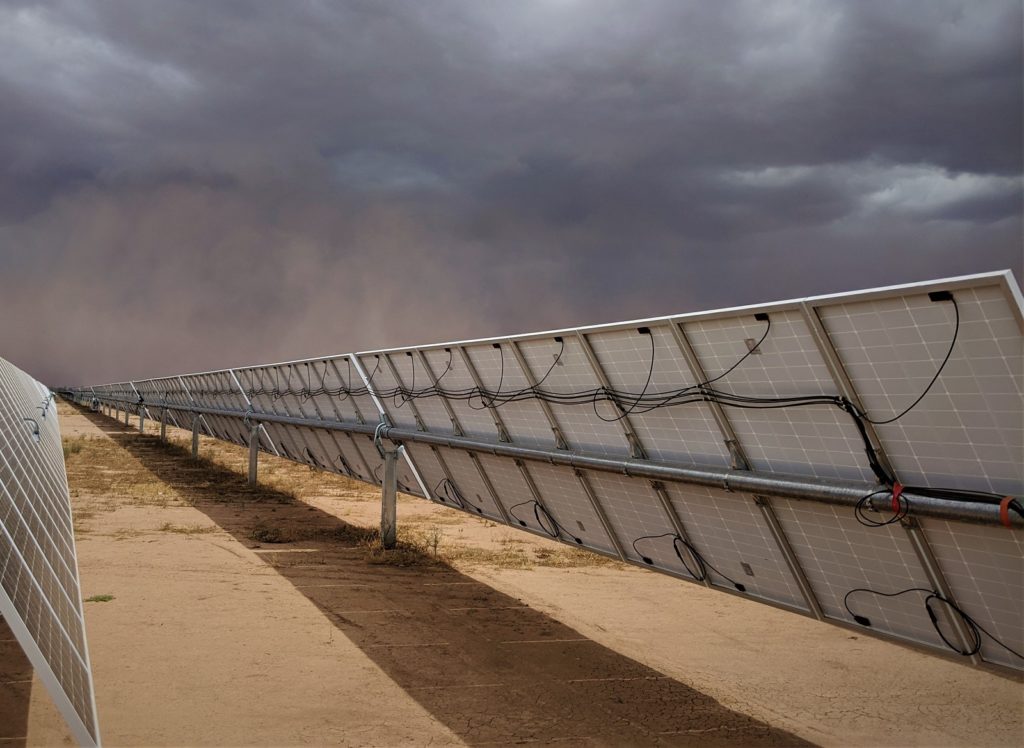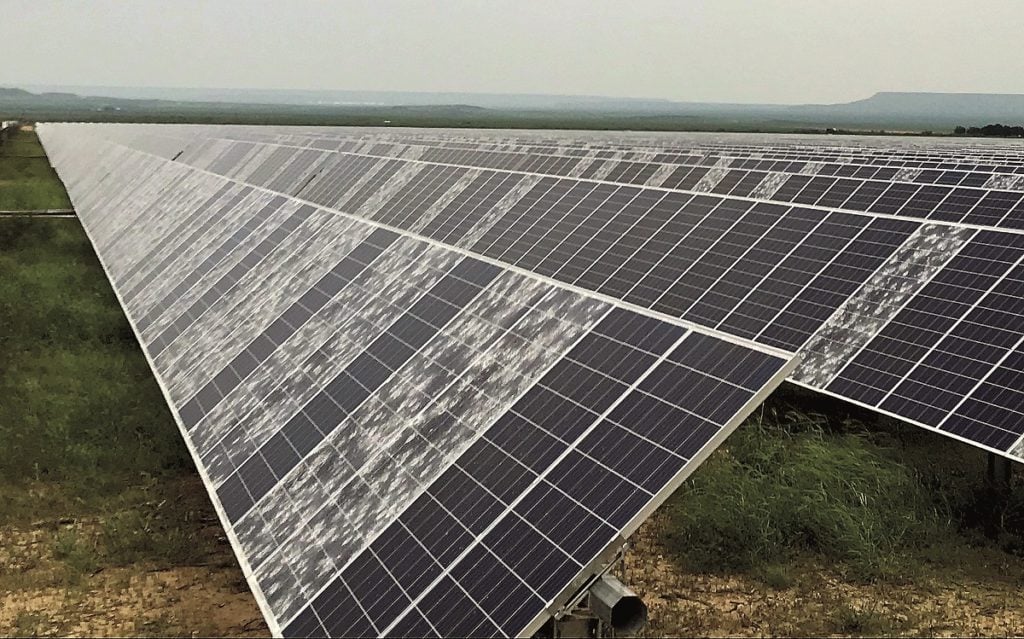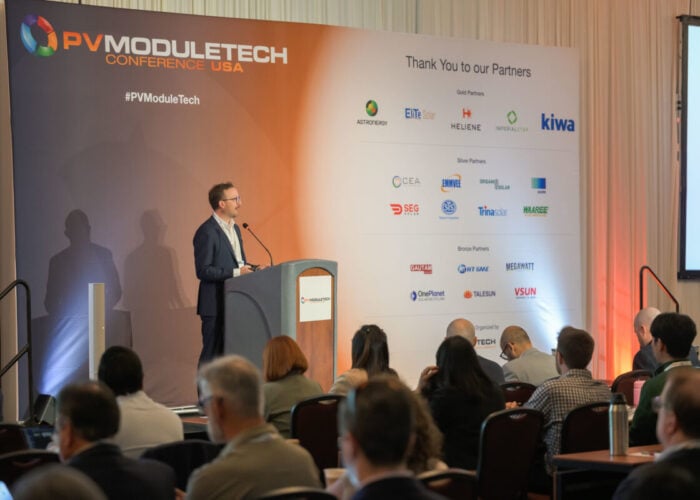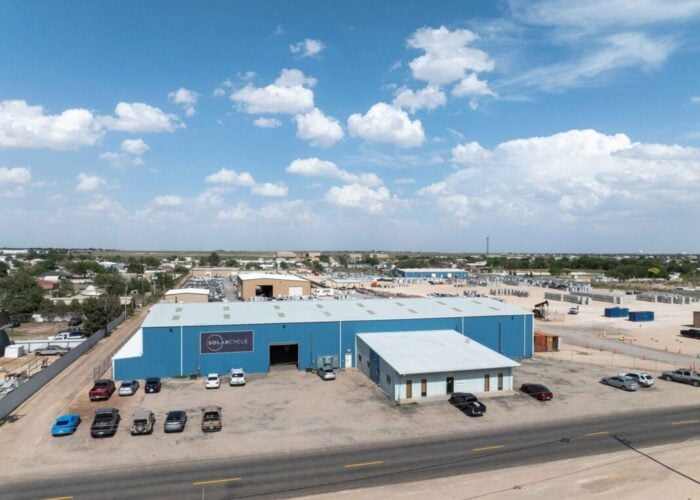
A combination of supply chain disruptions and extreme weather events that damage operational assets can lead to extended solar project downtimes. Rosa van Reyk, a senior underwriter at GCube Insurance, explores how the industry can ease supply chain pressure by rethinking cost efficiency and increased collaboration between developers and insurers.
2022 was a challenging year for the solar industry in the US. Reports from the Solar Energy Industries Association (SEIA) suggest that solar installations fell by as much as 23% last year, despite the accelerated demand for renewables. The slowdown can be attributed in large part to supply chain issues, which suffered yet another year of choking setbacks.
Unlock unlimited access for 12 whole months of distinctive global analysis
Photovoltaics International is now included.
- Regular insight and analysis of the industry’s biggest developments
- In-depth interviews with the industry’s leading figures
- Unlimited digital access to the PV Tech Power journal catalogue
- Unlimited digital access to the Photovoltaics International journal catalogue
- Access to more than 1,000 technical papers
- Discounts on Solar Media’s portfolio of events, in-person and virtual
After the Uyghur Forced Labor Prevention Act (UFLPA) came into operation in June, solar supplies have been held up at US borders. These cannot be released until producers provide documentation to prove that the supply chain has no activity in China’s Xinjiang region. To illustrate the impact this has had, Longi Green Energy Technology, Trina Solar and Jinko Solar – which make up a third of the US’ panel supplies – all halted new shipments in fear that more solar modules would be blocked.
This might not be such a problem if it weren’t for the fact that, in the last decade, Chinese manufacturers have been relied upon for 80% of the global supply of solar modules. This, combined with the rising cost of critical materials such as aluminium and polysilicon (both now cooling), has put the supply chain under intense pressure.
In fact, in a joint report in December 2021, Wood Mackenzie and the SEIA found that year-on-year price increases for commercial solar segments were the highest they had seen since tracking began in 2014.
Meanwhile, the ongoing Russian war in Ukraine has increased the vulnerability of the global supply chain, creating inflationary pressures across the board. Soaring energy prices in Europe and increases in oil prices in the US further hastened the desire to decarbonise the energy landscape.
To make matters worse, extreme weather in the US wreaked havoc in 2022 and contributed to severe damage to solar sites. As a result, operating downtime was exacerbated as sites waited for replacement supplies to be delivered.
As revealed in the ‘Supply Another Day’ report last year, GCube’s business interruption (BI) claims data indicates that, though the volume of claims remained at a similar rate, the duration of BI periods in these claims has been increasing. This is because the supply challenges have caused BI periods to lengthen. Ultimately, this takes its toll on the solar industry and the insurance market that supports it.
Why solar is especially affected
Solar is experiencing outsized impacts of supply chain disruption when compared to its renewable energy counterparts, such as wind. This is mainly due to the dependency on Chinese manufacturing and the lack of viable alternatives. This predicament is compounded by the fact that damage to solar modules generally requires a full replacement, as opposed to a repair option, and the technology for solar becomes obsolete at a faster rate.
GCube has observed a 50% increase across its solar book in the length of average downtime from 63 days to 94 days. Specifically, the length of average downtime in the US experienced a 78% increase from 78 days to 139 days. Not only does this emphasise how difficult the recent period has been for solar, but it also indicates how disproportionately US solar is suffering in the time it is taking to get projects back to full capacity following a loss.
Given that some developers are finding that their plants are down for double or triple the time they had planned for, the main exposure faced is exhaustion of their revenue protection which is typically only bought for a 12-month period. Losses resulting in a period of more than a year of downtime will fall to the owners’ balance sheet. Some developers, keen to capitalise on the current high energy prices, have made the decision to pay large fees in order to excuse themselves from power purchase agreements (PPAs) and move onto variable rate tariffs – these are more common in Europe. With supply as fragile as it is right now, the flexibility to take such opportunities is strained by potential risk.
Impact of natural catastrophe events
In the face of extreme weather, it is difficult for developers to have certainty that their assets will not experience downtime – especially if their projects are located in areas that are traditionally more exposed to natural catastrophe (nat cat) events.
GCube’s Nat Cat update last year recorded that hail losses in Texas exceeded US$300 million. This proved to be twice as costly as other key renewable losses of the last three years combined, and ten times as costly as Hurricane Hanna claims in 2020. When compared with wind, solar installations have sustained greater damage since 2020 in terms of the frequency and severity of claims.
In the last few years, reports of nat cat-related solar losses exceeding sub-limits of up to US$50 million have grown increasingly common. Adverse weather events were both more destructive and more common last year, culminating in losses across a higher number of projects. Evidently, this is not a sustainable way for the solar industry to continue to function and requires greater collaboration between developers and insurers.
With nat cat damage comes a surge in replacement solar modules. The sudden and high demand would stretch even a free-flowing supply chain. Solar is in uncertain territory when it comes to anticipating the lead time on equipment. The wait for panels, which was previously around six months, has crept, in some cases, to 14 months. Similarly, the wait for a main step-up transformer is now up to 16 months when it was previously 12 months. Considering the additional time required for installation, issues with items have the potential for significant loss of revenue. Proactive risk management and, in particular, the foresight to stock spares is likely to have a positive impact on insurance terms and conditions.
Extended project downtimes following weather damage are escalating the size of claims faced by insurers. This, combined with rapid growth in the sector is leading to a natural constraint of insurance capacity, especially in locations which model poorly.
Supply pressures on new projects
Supply chain issues are causing developers to take the unusual step of placing orders for modules before executing their PPA – the opposite of what has historically been considered normal practice.
The Inflation Reduction Act (IRA) will doubtless provoke growth across all renewable energy in the US. As it stands, projects are taking upwards of 12 months longer than expected to break ground. This disruption has an impact on various factors such as engineering, procurement and construction contracts, PPA negotiations as well as insurance pricing, which is generally only guaranteed for 30 days following a quote. In response to delays, we have seen the prices of solar PPA contracts rise by 33% in the last year, which gives a strong indication to the extent of the uncertainty around timeframes at the moment.
Large-scale developers, who may be working on multiple projects at once, have the potential to distribute resources and parts according to their needs; small-scale developers can do nothing but wait until the supplies arrive, occasionally jeopardising existing contracts.
As a ‘grab what you can’ mentality emerges in solar, smaller developers do not have access to the same coping strategies, nor the same networks to rely on. Given that solar technology evolves quickly, having the ability to redevelop sites or to pay to expedite critical parts is an important advantage when constructing a new project or following a claim.
Ways to ease supply chain pressure
While the supply chain is causing problems that are largely outside of the control of insureds and insurers, this does not mean that there aren’t some solutions. There are three approaches that can be taken to address these issues.
1. Diversifying the supply chain
There has been positive news for developers as some big-name Chinese manufacturers have been returned to approved lists (in the US) following approval that they meet UFLPA standards. Moreover, the downward price of the polysilicon index promises to have a positive impact on the price of modules and, in turn, applies a downward force on the price of solar technology and projects.
Nonetheless, this is not a case of business as usual. With demand so high, it is very much a seller’s market and developers are likely to find themselves disappointed in their quest to find manufacturers who can fulfil orders to schedule, if at all. Manufacturers are in a position to push more risk onto the buyer, especially when it comes to shipping terms.

The need to diversify the supply chain, then, still exists. Supply chain managers have been sourcing successfully from Indian and German manufacturers; these stocks have, however, been strained by the surge in demand for solar panels. Identifying suitable new suppliers comes with challenges. Buyers need to be assured of the financial robustness of companies which, for solar modules, traditionally offer 12+ year warranties. A transparent and compliant supply chain is critical.
The IRA has galvanised confidence in the US’s green energy aims; this is significant in an environment where policy has previously felt uncertain. A freeze on orders at First Solar has thawed following increased capacity to take new orders. Meanwhile, Hanwa Qcells is spending US$2.5 billion to expand its operations in Georgia. Although a considerable amount of US domestic capacity is catered towards the residential sector, this is a move in the right direction. Clearly, there is cause for manufacturers to feel more bullish about investment in the US.
2. Rethinking cost efficiency
Although cost efficiency is paramount in the renewable energy market, and the levelised cost continues to decrease, this doesn’t necessarily indicate that the cost of insurance claims is reducing. For instance, in the solar space, thanks to continued research and development, panels are becoming thinner, and using fewer costly materials. What this overlooks is that these panels can also become weaker and more likely to be damaged in harsh weather conditions, resulting in high replacement costs.
Similarly, the temptation to drive down initial costs by developing sites in undesirable and, therefore, cheaper locations comes with inflated risk. Sites exposed to extreme weather are becoming increasingly hard to insure as insurers caution around the effects of nat cat on solar claims. A project owner who experiences the negative effects of natural perils could find themselves in a position where it is economically unviable to transfer their risk to insurers in the following policy year.
Cost volatility of insurance in the Southeast of the US has led to project cancellation, post permitting. If projects continue to generate unsustainable losses to the insurance market through damage and downtime, the ability of insurers to make medium-term commitments on rating is affected. It is becoming increasingly important to consider the fluctuating costs of insurance, which have traditionally been considered reasonably fixed, but latterly have had the ability to meaningfully affect margins.
3. Collaboration between developers and insurers
From an insurance perspective, greater communication between developers and insurers can do much to support the solar sector through supply chain difficulty. Insurers have powerful networks as well as specialist knowledge which can help developers in various scenarios. This includes a pool of experts who have access to spare parts, ways to expedite deliveries as well as pre-construction advice on reducing risk. The quicker developers are to notify their insurer of a loss, the greater the chances are of insurers helping to source spare parts.
Part of this network includes a strong relationship with manufacturers, as well as other clients, who may have excess inventory. Owners and developers can take advantage of this and make substantial revenue savings, especially given they will be expected to retain the first 30-60 days of any loss of revenue.
Plans for the growth of solar projects have been energised by the IRA, but a frenetic approach to adding green MW to the grid will result in poorly planned, resourced or situated solar sites. Rushed decisions are generally reflected in insurance terms and conditions and these costs can mount to such an extent that the economic viability of the project is jeopardised. Thoughtful risk management such as site planning, supply chain management as well as disaster recovery plans create an advantageous position from which to access best insurance terms.
Evidence suggests that the levelised cost of solar will continue to decrease even if the risks facing certain geographies do not. Ongoing supply chain pressures which have combined with unprecedented losses have created a perfect storm of escalating costs for owners and their insurers. This presents an opportunity for insurers, lenders and owners to work together more closely in order to find creative solutions to support the collective mission of reaching net zero.
Author
Rosa van Reyk is a senior underwriter at GCube Insurance and provides clients and brokers with support for onshore wind and solar risks. She specialises in insurance solutions for clients with assets across North America.







